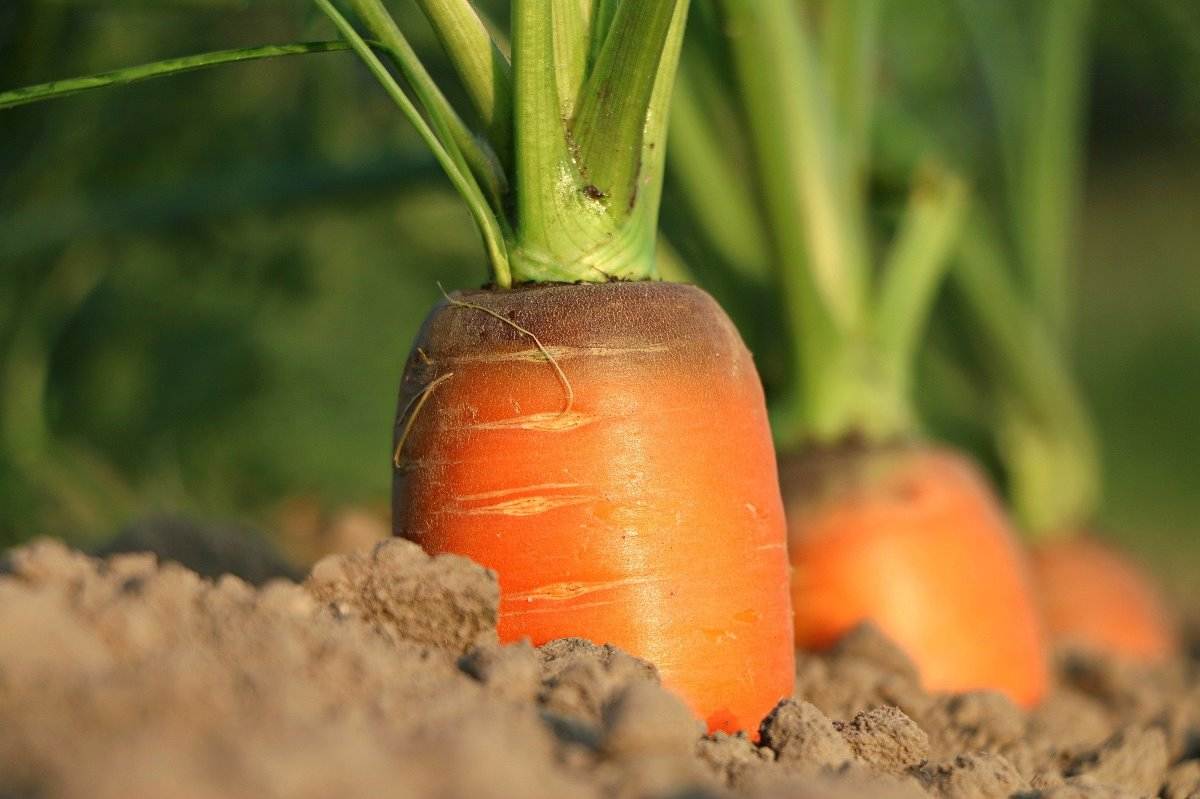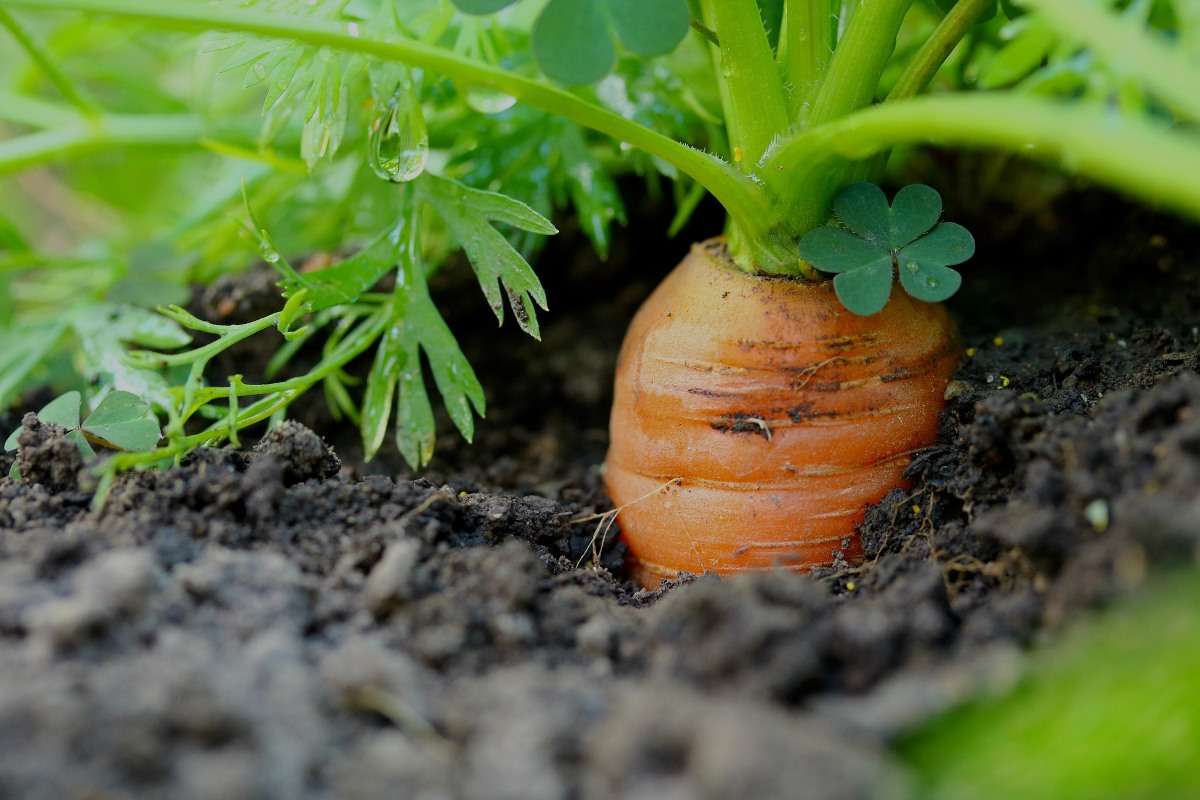Growing Carrots in Greenhouse
Carrots are extremely nutritious and a perfectly easy plant to grow in a greenhouse system. The best part is that it tolerates a cooler temperature which means you don’t necessarily need a heater in the winter season. Carrots are easy to grow and produce a lot of vegetables in a small space and they will need to be thinned after they start to grow. Giving them enough root space so far as depth and spacing are imperative but aside from this, as they are beneath the soil they will tolerate cooler temperatures quite well. An unheated greenhouse, as well as a heated greenhouse, will offer them plenty of warmth for plant growth. Keep the temperature at about 10°C and Carrots will produce well so long as they are encased in a more sandy type soil and have plenty of nutrients. In this article we also discuss the below topics about Carrot production;
- Can Carrots be grown in a greenhouse
- How many Carrots do you get per plant
- How much water does it take to grow a Carrot
- The best soil for growing Carrots
- How much time it takes to grow Carrots in a greenhouse
- Can you grow Carrots in a greenhouse over the winter
- Growing Carrots in Greenhouse in winter
- Growing Carrots in Greenhouse from seed
A Step by Step Guide to Growing Carrots in Greenhouse
A Greenhouse system is used to growing several crops under partial or fully controlled environmental conditions to get optimum growth. Greenhouses provide a great way to grow vegetables all year round by helping to protect your plants from things like excess cold temperatures and unwanted pests. One of the biggest advantages of growing Carrots in the greenhouse is that you can extend growing seasons, getting an early start on spring and summer, and even growing certain vegetables all year round. Plant them in the fall season and they can be harvested as soon as the ground thaws. If you’re having a good winter and the ground thaws once or twice before the spring season, check the Carrots. They may be ready and the variety of Carrots makes a huge difference here so make sure you get one that is very cold-hardy. In India, the Carrot cultivated states are Karnataka, Punjab, Uttar Pradesh, Tamil Nadu, and Andhra Pradesh.
Why Use a Greenhouse to Grow Plants?
Greenhouses offer an ideal growing environment for plants and ultimately provide;
- Temperature and humidity control
- Shelter from harsh weather and winds
- Protection from harmful pests
- Extended growing seasons and higher crop yields
- Increased control over crop production means watering, and sunlight, etc.
As a grower, your main concern is the health and profitability of your crops. With the protection of a greenhouse system and follow growing conditions, you can ensure that plants grow better. Healthier crops are more profitable and tend to sell quicker than plants of lesser quality. Now, let us get into the details of growing carrots in Greenhouse in India.
Soil Preparation for Growing Carrots in Greenhouse
Carrots are easy to grow year-round but have proper soil conditions to thrive. The average soil temperature should be around 4°C to start your Carrot seeds. They like loose and sandy soil to allow plenty of room for root development. If the soil has stones or clumps, Carrots can become misshapen or stunted.
Carrots prefer sand peat moss is a good soil additive to encourage light, airy soil. Carrots can tolerate frost and cool temperatures. Carrot seeds are slow to germinate in cooler weather conditions, but they need cool temperatures for developing sweet, well-formed roots.
Location for Growing Carrots in Greenhouse
Locating greenhouse-grown vegetables near large population areas is important and highways have made transporting greenhouse-grown vegetables easier. Growing Carrots in Greenhouse should be constructed on level sites with deep, well-drained soils. Sandy loams are best for crop growth. A source of good-quality water is important. High salt concentrations in the soil or water can significantly reduce crop yields.
- Types of Pesticides Used in Agriculture: A Beginner’s Guide
- Economical Aquaculture: A Guide to Low-Budget Fish Farming
- 15 Common Planting Errors That Can Doom Your Fruit Trees
- How to Make Houseplants Bushy: Effective Tips and Ideas
- Innovative Strategies for Boosting Coconut Pollination and Yield
- Pollination Strategies for Maximum Pumpkin Yield
- The Complete Guide to Chicken Fattening: Strategies for Maximum Growth
- Natural Solutions for Tulip Problems: 100% Effective Remedies for Leaf and Bulb-Related Issues
- Revolutionizing Citrus Preservation: Towards a Healthier, Greener Future

Find a location where the greenhouse will be getting at least 6 hours of direct sunlight per day during the winter season. By orienting the greenhouse east to the west direction, the largest side will get full southern sun exposure. If you don’t have an area with enough sun and grow lights can be added to compensate. Carrots enjoy a pH of 6.0 to 6.5. They do not grow in very acidic soil or soil that is too rich in nitrogen.
Points to consider before selecting the Greenhouse site;
Before deciding to start greenhouse farming, you have to consider some points to become successful in greenhouse farming.
- Soil pH level is between 6.0 to 6.5 and EC (Volatility) 0.3 to 0.5 mm/cm.
- Good water quality is continuously available.
- The irrigation water samples must be range from pH level 5.5 to 7.0 and E.C. 0.1 to 0.3
- The selected place should be pollution-free.
- There must be roads for transportation and shipping of goods in the market.
- The place must be large enough for the upcoming expansion.
- Workers must be available easily.
- There must be excellent communication facilities in place.
- The drainage of the soil must be excellent.
Requirements for Growing Carrots in Greenhouse
The Importance of Greenhouse Ventilation – The important function of the greenhouse is to provide the perfect environment for plant growth. Plants can get too hot even during cold or cool weather condition, so good greenhouse ventilation is crucial. Vents can be hand-cranked, but you’ll want to monitor temperatures closely. Then, there are electric and temperature-sensitive hydraulic vents that automatically open and close. Installing an oscillating fan will help keep air moving through the greenhouse and prevent several disease problems.
Air exchange is important not only for providing the carbon dioxide and fresh air that plants need for the photosynthesis process. Also, it helps keep the temperatures inside your greenhouse regulated. In the winter season, a greenhouse’s function is to store heat from the sun, creating a warmer temperature in the greenhouse versus outside of it. But in the summer season, an unventilated greenhouse can turn into a furnace, holding withering heat instead of protecting plants from the elements.
Seasonality plays a major role in ventilating any size greenhouse. During the summer season, convection currents created by the natural heat is more than enough to keep good circulation. By keeping both the wall vents and the roof vents open during the summer season, cool air will be pulled in through the walls while hot air will escape through the roof. During the winter season, maintain air circulation and preventing the growth of mold can be more difficult.
In case if you miss this: Organic Capsicum Farming In India

Heating – If you live in a cold climate condition you need to insulate the greenhouse to help keep your plants toasty warm. Though a lot of suns will come in during the day, an uninsulated greenhouse will cool off quickly at night.
Light Sources – During the winter and autumn seasons, you might have to purchase a secondary light source to keep your plants going. As opposed to the summer and late spring season. All in all, every greenhouse system will need a supplementary light source. LED grow lights and high output fluorescent pumps are the favorite secondary light sources.
When to Sow Carrot Seeds in Greenhouse
- Carrots do well in colder temperature levels. At daytime, it must be around 23°C and at nighttime, around 12°C. So, it is a great plant that you can grow in your greenhouse in spring, fall, and winter. You may not plan to grow them in the summer season because it could be difficult to keep the temperatures down, depending on location.
- Carrot seeds can be sown from early spring season right through to late August and can be harvested almost all year round. Most Carrot varieties are sown outdoors between April and July. Early cultivars like the ‘Nantes 2’ can be sown in greenhouses from February. Check the seed packet if you’re unsure when to sow your chosen Carrot variety.
- For a spring harvest, you can grow Carrots in a greenhouse throughout the winter season. However, they prefer to be cool and don’t do well in greenhouses during the hotter summer months.
- Select a sunny spot with light, fertile soil, and good drainage. Add plenty of organic matter to the soil before sowing seed but remember that Carrots dislike freshly manured earth. Prepare your beds for the autumn season before to allow a period of rest before planting.
- Do not put manure on your soil and there are too many nutrients in it. A little amount of general fertilizer applied one week before seed sowing is sufficient.
Propagation for Growing Carrots in Greenhouse
- Carrots are propagated by using seeds.
- Depends on the variety, the Carrot seeds are sowing in the field with a seed rate of about 5 to 6 kg /ha.
- The seeds are small and approximately 800 per gram. They remain viable for nearly three years and up to about 85% germination.
- Though, the germination of some local varieties may be inadequate. So, it is necessary to ascertain the germination percentage when calculating the seed requirement.
- The seeds take approximately 7 to 21 days for complete germination.
- The best seed germination occurs at 20 to 30°C. Sow Carrot seeds thickly in rows 16 to 24 inches apart. As plants grow, thin to 1 inch apart, and then keep well-watered.
- Sow 15-20 Carrot seeds per 1-meter row. After 3 to 4 weeks of seed sowing, thin plants to 10 to 15 per row, then start your second row.
- About 5 to 6 weeks after sowing your second row, thin plants to 10-15 per row. Carrots thrive in hot conditions. Water every 7 to 14 days as appropriate.
Best Practices to Growing Carrots in Greenhouse in Winter Season
- First, choose your Carrot seed variety. If you’re planting in a hoop house or the ground in a greenhouse system, Chantenay Carrots develop stocky roots that become sweeter in cool soil. Rondo and Early French Frame are also good choices to sow around the interior edges of the greenhouse.
- Sow Carrot seeds ¼ inches deep, and 3 to 4 inches apart in an area that gets full sun to partial shade, at least 6 hours of sun per day. Carrots don’t take up much space, averaging 6 Carrots per square feet, and can be sown every 3 weeks for multiple harvests throughout the winter.
- Mulch or cover with vermiculite during the seed germination period. Carrots take a long time to germinate and prefer moist soil for the first 10 days.
- Water Carrots to at least 1 inch per week to start, and then 2 inches as roots mature. Make sure that soil remains airy and then easy to drain with the added moisture.
- Carrots take a long time to grow to maturity, up to 4 months. Normally, the smaller the Carrot, the better the taste; most Carrots are at their best flavor and texture when they reach finger size.
Procedure for Growing Carrots in Greenhouse
Steps to growing Carrots in Greenhouse;
1. Let’s start at sowing
Rake the soil until it becomes crumbly fine before scattering the Carrot seeds. The seeds should be sown thinly, which can be tricky because they are very tiny. Cover up and then firm the rows smoothly. The Carrot spacing should be 6 inches apart. You can plant them into a larger planter, raised bed, or into the ground inside or outside the greenhouse.
To sow them into a raised bed inside the greenhouse because you can fit them on side of the greenhouse and they will give Carrot enough depth to grow their roots.
2. Thinning Carrot seedlings
Carrots will germinate after 2 to 3 weeks. Eliminate the weaker seedlings and be sure not to bruise or wound the leaves and stems. The discarded plants should be burnt or buried right after removal. Leaving 2 to 3 inches between the remaining seedlings is excellent for healthy growth.
3. Watering the Plants
Your Carrot plant maintains moist but not soggy soil. Do not let it dry out after sowing the seed because the seeds will die. One of the most common mistakes new growers make is watering Carrot plants according to a set schedule. Several variables dictate when plants need watering, temperature, humidity, and the growth stage of the plants themselves having a huge effect on how much water is needed. In the middle of winter, you need to water a seed bench every 10 days, during summer the amount of water will be increased. The best method to know when to water the plants is to measure moisture in the soil, either with specific moisture meters or just by sight and feel of the soil.
4. Watching out for Carrot pests
A Carrot fly is a common pest to Carrot plants. It is attracted to Carrots by the scent of wounded plant leaves. Thinning and harvesting Carrots at night is ideal to reduce the number of Carrot flies. Firming and watering reduce their number. Consistent watering and hoeing down within the rows will make Carrots pest-free and strong. You can use a fine mesh to wrap the seedlings and the soil close to them. Grass and leaf mulch can discourage the flies as it makes laying their eggs into the soil harder.
Greenhouse Loans for Growing Carrots in India
Financing or loans of greenhouses is a service offered in partnership with the Ministry of Agriculture, specialized companies, and interested organizations in agricultural development.
You can apply for a loan for the construction/erection of greenhouses purchase and installation of necessary components and working capital. The quantum of the loan is up to 80% of the project cost, a maximum of Rs.5.00 crore.
What are the required guarantees to obtain greenhouse loans?
All or some of the following guarantees;
- A commercial guarantee from a merchant that has an account with Cooperative and Agricultural Credit Bank (CAC Bank).
- Guarantee a deposit in the bank.
- Partial guarantee for those employees who receive their salaries through our bank not exceeding 50% of the net salary.
- For short term finances reached to 2 years, gold mortgages must equal to 150% of the value of the finance as approved by the Agricultural Credit Committee.
- A property located in a provinces’ capital that covers at least 120% of the value of the required finance.
Subsidy for Growing Carrots in Greenhouse In India
The Regulatory body in India for greenhouse farming is the National Horticulture Board (NHB). NHB provides a subsidy of about 50% on a project of 112 lakh maximum ceiling per beneficiary.
Gujarat Agro Industries Corporation (GAIC) provides a 6% subsidy up to a maximum limit of about 4 lakhs.
NHM (National Horticulture Mission) provides a 50% subsidy up to a maximum limit of 50 Lakhs.
Apart from the above, for every state, there is a facility provided by the SHM (State Horticulture Mission), which provides an additional subsidy of 15 to 25 % on the 50 % provided by NHM.
When and How to Harvest Carrots in the Greenhouse

Earlies – 12 weeks after sowing. Main crop – 16 weeks after sowing
Baby Carrots are ready to harvest 50 to 60 days from the planting date. Mature Carrots need a few more weeks and are ready in about 75 days. Depending on the variety, most Carrots are ready to harvest when the shoulders are 1/2 to 3/4 inch in diameter. If growing late into the year, a frost will make Carrots taste sweeter, so don’t be afraid to leave them a little longer before harvesting.